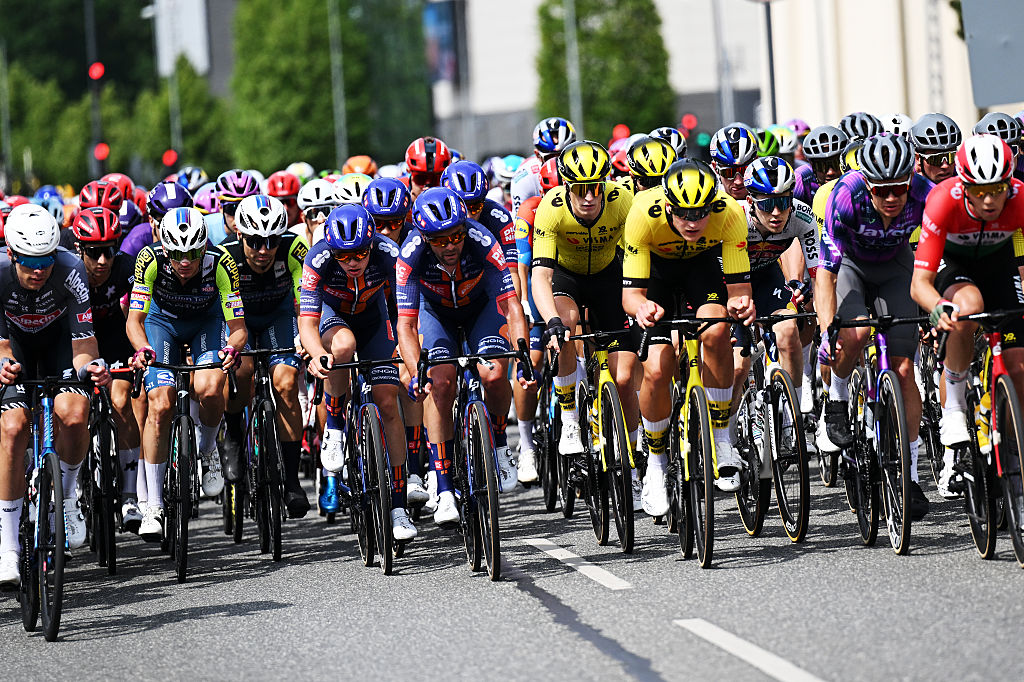
Cycling's cross-party safety body SafeR has given a mid-year update in their mission to make racing less dangerous, sharing the results of their crash analysis work, confirming the event for upcoming maximum gear ratio testing, and
SafeR, a body made up of representatives from cycling's key stakeholders – teams, race organisers, rider unions and the UCI – work with the UCI and other stakeholders to improve safety in cycling.
Their work informed much of the swathe of new safety measures introduced by the UCI, including new equipment rules and the introduction of a maximum gear ratio test later this year.
In an update on Thursday, the UCI and SafeR confirmed that this gear ratio test will take place at the men's Tour of Guangxi, October 14-19, with riders required to have a maximum gearing of 54 x 11. There does not appear to be a test planned for a women's race.
"This end-of-season test will be followed by a rider survey and will enable this measure to be studied in detail ahead of any further testing in 2026," the UCI said.
The update also included the results of some of the initiatives and analysis SafeR has been behind this season, including yellow cards and the race incident analysis conducted by the SafeR Case Management Committee.
The Management Committee identified and analysed nearly 300 incidents over the last six months, identifying 203 different causes, with rider behaviour causing a large percentage of the crashes analysed.
"The most common cause – or main contributing factor - is the riders’ own mistake (29%)," the UCI said. "Upcoming points of interest, where teams and riders are positioning to be at the front (such as cobbles, sprints and climbs), are at the root of 12% of incidents, as are wet or slippery roads.
"Other incidents stem from descents, traffic infrastructure, sprints, road configuration and conditions, feed zones and other riders’ mistakes."
On the yellow card system, which was introduced in January and has been active across all UCI WorldTour, ProSeries and Continental Championship events this year, the UCI confirmed that 159 yellow cards have been given out – approximately one for every 1.5 race days.
In June, Alpecin-Deceuninck's Oscar Riesebeek became the first rider to receive a suspension after being awarded two yellow cards in one race, earning a seven-day ban from competition.
Less than 50% of the cards handed this year have gone to riders, who made up 42% of card recipients. Team staff earned 37% of the warnings, and the rest were handed to media personnel and other race vehicles.
The three most common reasons for a yellow card were "unsafe driving in races, unsafe behaviour of team staff in feed zones, and riders in sprints".
With the UCI already implementing or planning to implement many of SafeR's recommendations, the next initiative will be the introduction of rider tracking, which the UCI confirms will be in place for the 2025 Road World Championships in Kigali in September.
This comes a year after junior Muriel Furrer died at the World Championships in Switzerland, after crashing into a ditch where she was not found for some time.
The system will be in place at the World Championships after the UCI observed testing at the Tour de Suisse, and may then be implemented in the wider calendar.
"SafeR experts were present at the Tour de Suisse Women and Tour de Suisse earlier this month to observe and assess the testing and development of GPS technology used by the organisers to track riders and alert a security centre in the case of abnormal signals," the UCI said.
"For future seasons, the UCI will collaborate with stakeholders on the broader implementation of rider tracking to ensure organisers, medical services and UCI Commissaires are provided with relevant data in real time throughout the race."
The other results of SafeR's work in the first half of 2025 include a codified Restart Protocol for race neutralisations, a Way Out and Way In system for race vehicles, and monitoring and flexibility around feed zones.







